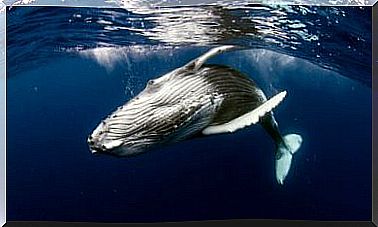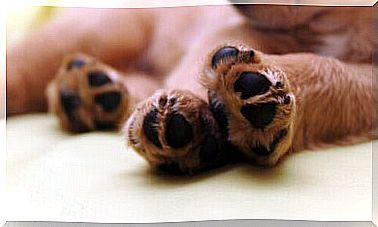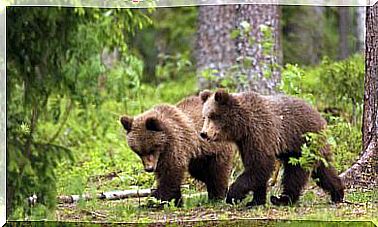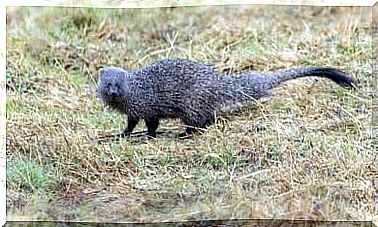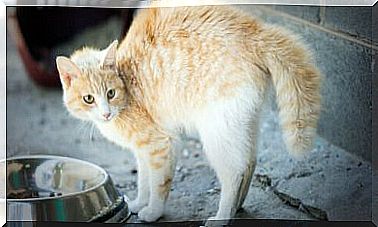5 Reptiles Living In The Amazon
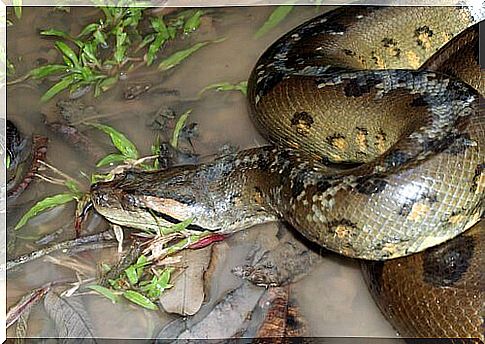
Within the great biodiversity that embellishes the largest tropical forest in the world, we can find thousands of species. But this time we have decided to tell you about 5 reptiles living in the Amazon. Would you like to know them better? So, keep reading this article.
What are the reptiles living in the Amazon?
The “green lung of the planet” is home to millions of animals and plants. All of them live hidden among trees and rivers. Among the reptiles living in the Amazon we can highlight 5 truly fascinating and unique:
1. Green anaconda
It is a constricting snake belonging to the boa family and is endemic to South America. This reticulated-skinned reptile, seen in the photo above, is the largest snake in the world, as it can measure up to 4 meters in length and weigh 17 pounds.
It is dark green with black and ocher oval spots, its belly is lighter and its muzzle is covered with scales. The tongue acts as an olfactory receptor, which makes it possible to find food, both in trees and in water.
When hunting it does not use any poison, since it does not have any. It suffocates the prey and then swallows it whole. He succeeds thanks to his dislocated jaw that allows him to open his mouth to the maximum. Since he doesn’t chew his food, his digestion can take several days. Its diet is based on capybaras, tapirs, rodents, fish, amphibians, reptiles and eggs.
2. Spectacled Caiman
Another of the most famous reptiles living in the Amazon. It is carnivorous and inhabits freshwater streams, swamps and lakes. Males reach 2.5 meters in length while females are almost half. During the reproductive period, which coincides with the rainy season, they form a nest using vegetation and deposit up to 40 eggs in the soil , which they incubate for more than three months.
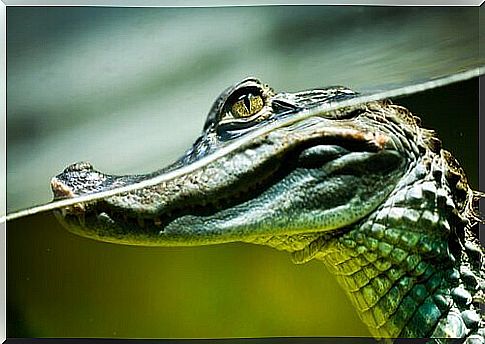
The spectacled alligator feeds on crustaceans, birds, reptiles, fish, amphibians and mammals of different sizes. He is named after the bulge he shows in his eye area, which makes him appear as if he is wearing a pair of glasses. The rest of the body is dark green and covered with scales.
3. Tortoise of the Amazon river
This turtle lives in the rivers and lakes of the Amazon and is also known as Terecay . Its carapace is olive green or brown. The skin of the legs, head and tail is gray and around the face and skull has scales, as if it had a kind of “protective helmet”. Young specimens have yellow spots on their faces, which darken as they grow.
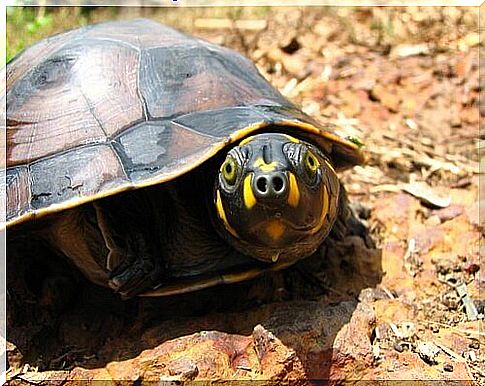
It is considered a slanted neck turtle because it does not hide its head in the shell in a straight motion, but before doing so, it tucks its neck to the side. She is a skilled swimmer, playful and a lover of “sunbathing” in the morning. It feeds on fish, plants and small invertebrates. She is a true expert in hunting, especially when in the water.
4. Basilisk
This lizard native to Central and South America is something of a combination of an iguana and a dinosaur. It has neural spines on the top of its head, back and tail, which give it an almost dragon-like appearance.
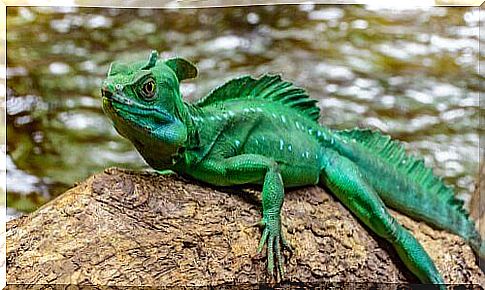
One of the curiosities of the basilisk is that it can walk on the surface of the water without sinking, thanks to some lobes of skin that it has on its legs and which act as fins. To achieve this, you need to increase your speed, which is why this is the technique used to escape from any danger.
5. Black caiman
This carnivorous reptile is the largest predator in the entire Amazon rainforest. As the name suggests, it is black in color, which allows it to blend in with the environment, since it loves to hunt at night. It spends most of its time in the waters and is one of the most feared reptiles living in the Amazon.
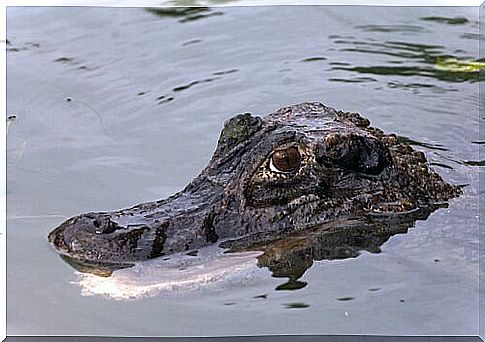
The black alligator feeds on large animals, especially mammals, such as deer, capybara, and tapirs. Adult males can measure six meters in length (including the long tail).
These were the reptiles living in the Amazon. Did you like them?

